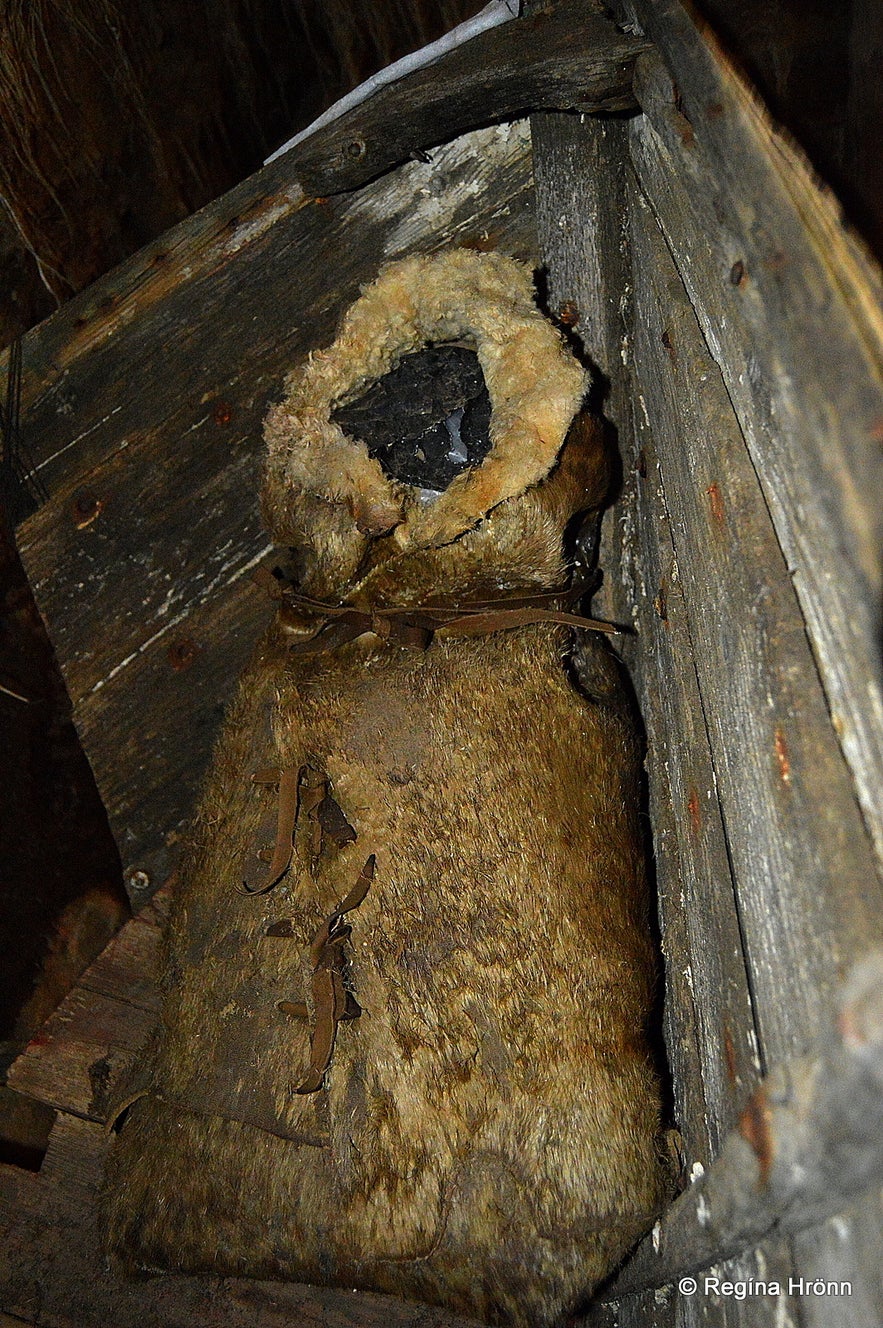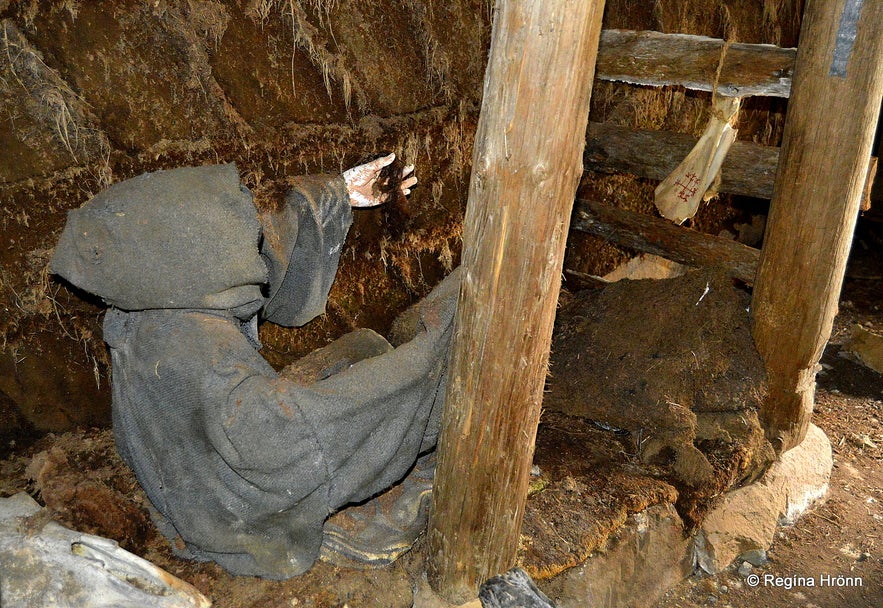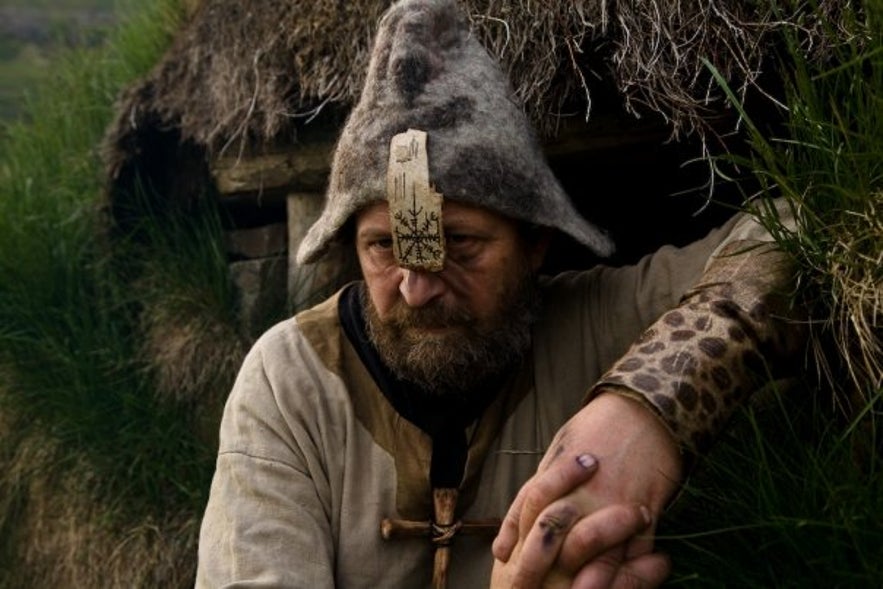
The Mystical Sorcerer's Cottage in Bjarnarfjörður in the Westfjords Region - Kotbýli kuklarans

In the remote Strandir area in the Westfjords Region of Iceland, the mystical Kotbýli kuklarans - the Sorcerer's Cottage awaits you. It represents both the habitation and living conditions of a sorcerer, but also the normal living conditions of tenant farmers in the 17th century.
The Sorcerer's Cottage, located at Klúka in Bjarnarfjörður, north of Hólmavík village, can be visited in the summertime.
In my travel-blog about the Museum of Icelandic Witchcraft and Sorcery in Hólmavík village, I told you about my visit to the sorcery museum. My visit was in April, which is still wintertime in Iceland, so I couldn't drive up to Bjarnarfjörður to visit the Sorcerer's Cottage, but the following summer I popped up to this sorcery area of the Westfjords Region and checked it out.
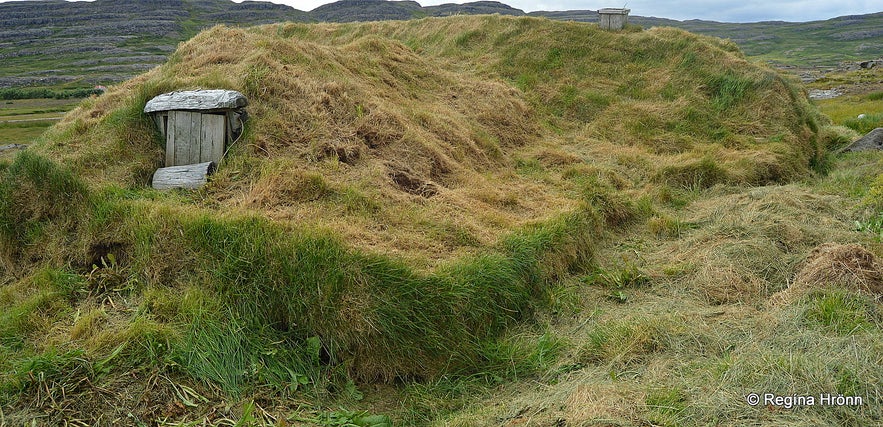
Kotbýli kuklarans - the Sorcerer's Cottage
Kotbýli kuklarans - the Sorcerer's Cottage was first opened on the 23rd of July 2005 and is the second exhibition of the Galdrasýning á Ströndum, but the first exhibition, the Museum of Icelandic Witchcraft and Sorcery opened in the year 2000 in Hólmavík.
The Sorcerer's Cottage consists of 3 connected turf houses made of turf (sod), rocks, and driftwood according to age-old methods. Driftwood is one of the main resources in this remote area of the Westfjords Region and was used here as a building material for the turf houses to a much greater extent than in other parts of Iceland.
A plea was made to Icelanders for things to use in the Sorcerer's Cottage, f.ex. hides, lambskin, scythe-handle, rakes, and all kinds of tools used in the turf houses in the olden times.
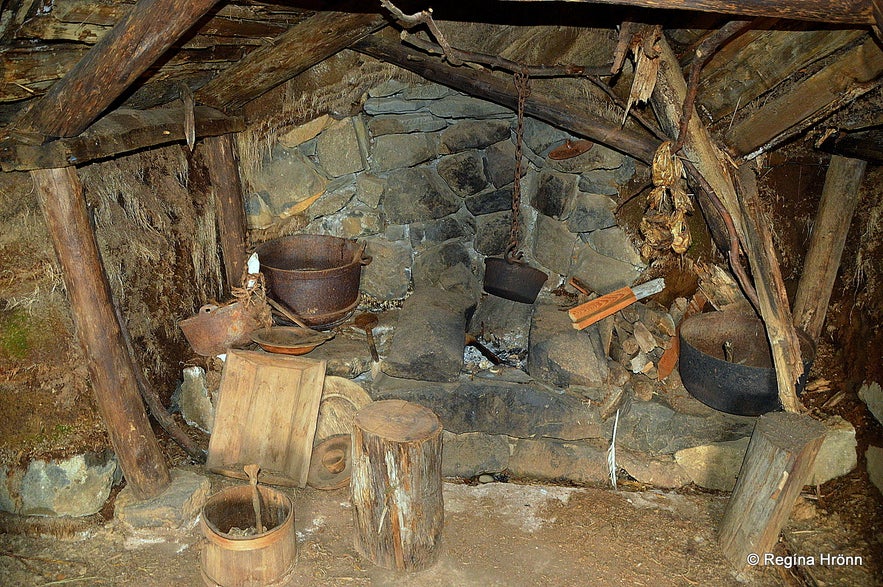
Kotbýli kuklarans - the Sorcerer's Cottage
Icelanders lived in turf houses from the settlement of Iceland in ca 874, and the last inhabitants of turf houses here in Iceland moved out in ca 1966. We have only got a few turf houses left in Iceland, mainly the larger turf houses from the 19th century, which were much bigger and bounteous than the turf houses of the commoners.
At the Sorcerer's Cottage, you will get an insight into the mindset of the Icelandic commoners during the witch hunt in Iceland, and learn about the methods they used to try to lift the burdens and struggles of their daily life.
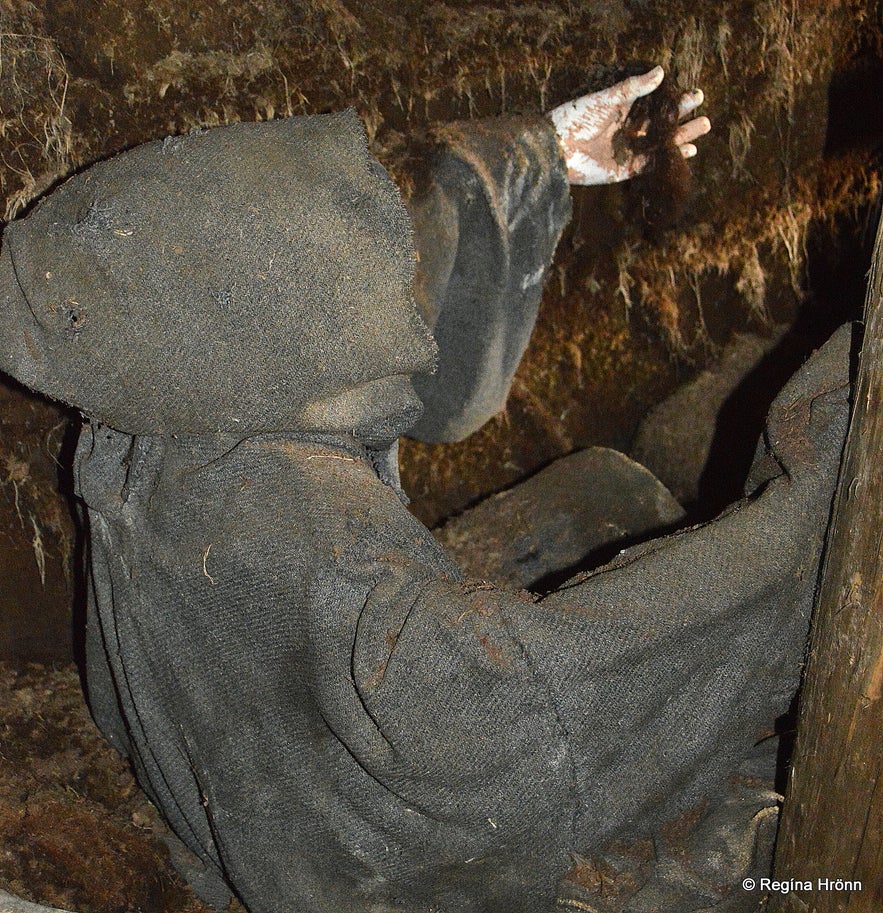
Kotbýli kuklarans - the Sorcerer's Cottage
The kind of magic they used was harmless and could have been something like using simple magic for making your cow milk better or your grass grow better, or your tools more efficient - something to make your daily life easier on this harsh island.
I don't blame them, living in Iceland in the 17th century and living in Iceland in the 21st century with all the modern comfort is not quite the same thing. And some of us are still superstitious in these modern times, I for example ;)
Inside the Sorcerer's Cottage, you will notice many strange signs in several places, f.ex. on the wood of the bed as you can see in my photos below.
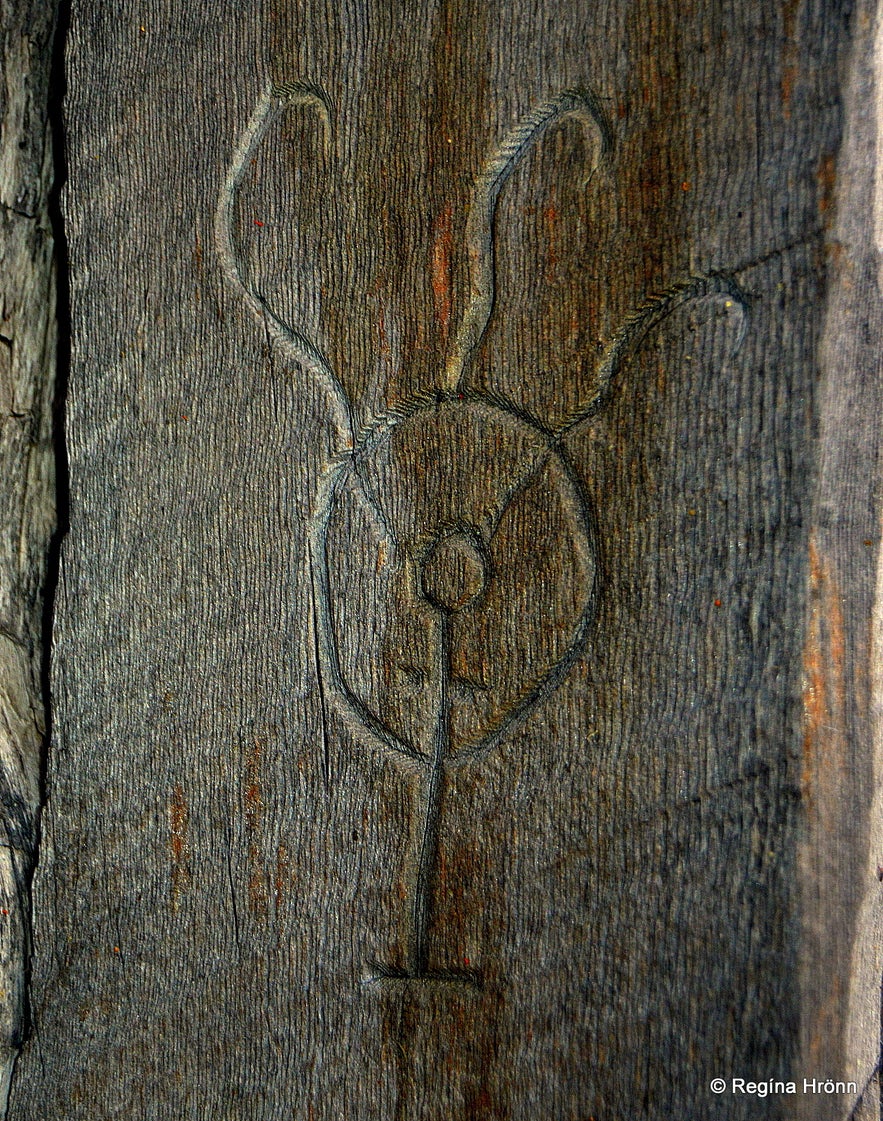
Kotbýli kuklarans - the Sorcerer's Cottage
These strange signs are called galdrastafir - magical staves or magical signs and were used by some common Icelanders during the witch hunt, for protection against evil spirits, fox-bites, etc. Some of the signs were used for the healing of illnesses or to make sheep tame.
These signs may be linked to the old knowledge of the Viking runes and religion mixed with Catholic superstition, and it seems to have been tempting to use these magical signs when faced with difficulties - despite the fact that these poor people could have been faced with prosecution for sorcery.
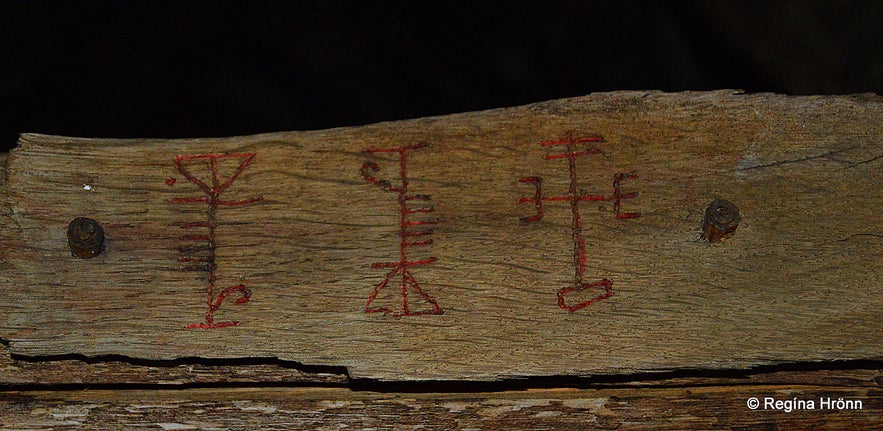
Kotbýli kuklarans - the Sorcerer's Cottage
In 1/3 of the witchcraft accusations here in Iceland such magic signs or grimoire (magic book) were mentioned.
The emblem of the Strandir area in the Westfjords Region is Ægishjálmur - the Helmet of Awe - due to its connection to sorcerers. I haven't got a photo of that sign, which I think is the most magnificent of all the signs I have seen, but if you click on the link above, you will see what it looks like.
Svanur at Svanshóll
Kotbýli kuklarans - the Sorcerer's Cottage
One of the most powerful sorcerers of Iceland lived here at Strandir, Svanur á Svanshóli. Svanur is mentioned in chapters 9-12 in Njálssaga - the Saga of Njáll.
Svanur was the son of Björn and Ljúfa (Sweetie), who according to Landnáma - the Book of Settlement, were the settlers of Bjarnarfjörður. Svanur, who was a known sorcerer, and the Saga describes him as having been a very difficult person to handle, settled here at Svanshóll. He gave shelter to the foster-father (fóstri) of his niece, Hallgerður langbrók, - Þjóstólfur - after he had killed Hallgerður's first husband, Þorvaldur, but Þorvaldur had slapped Hallgerður so hard across the face that he had drawn blood.
After the murder, Hallgerður langbrók sent Þjóstólfur to her mother's brother, Svanur, where he could seek shelter. When Ósvífur, Þorvaldur's father, and his men, went to revenge him and seek Þjóstólfur, the fetches of Ósvífur approached Svanur (fetches are regarded as a common thing in Iceland, even nowadays, and I have often noticed them RHR). Svanur asked Þjóstólfur to follow him to Bjarnarfjarðarháls and wrapped goatskin around his head and uttered:
Kotbýli kuklarans - the Sorcerer's Cottage
"Verði þoka
ok verði skrípi
ok undr öllum þeim,
er eptir þér sækja,"
Translated into English it goes something like this:
"Let there be mist and fog,
let there be fright
and wonders to all those
who seek you."
The sorcerer Svanur conjured up a thick fog in Bjarnarfjörður at Bjarnarfjarðarháls. The men tried to cross, but the thick fog made them fall off their horses and lose them, and some of the men walked into the swamp and others into the wood and they even lost their weapons in the thick fog.
Ósvífur thought of retreating if only they could find their horses and weapon. The fog lifted enough for them to find their belongings and the men then retreated. But Ósvífur's men wanted to try again to cross, but the same happened.
The same thing happened 3 times and the men finally retreated and Ósvífur sought compensation for his son at Höskuldsstaðir farm where Hallgerður's father, Höskuldur, lived. Höskuldur paid compensation in silver and settled this case once and for all.
Kotbýli kuklarans - the Sorcerer's Cottage
It is said that the sorcerer Svanur walked into the gorge above the Svanhóll farm and exited in Kaldbaksvík cove on the northern side of the mountain range where he went fishing. Svanur ended his life on the boat and fishermen in Kaldbaksvík cove said he had disappeared into Svansgjá gorge in Kaldbakshorn after his death, where he is said to have been greeted warmly.
_______________________
Sigurður Atlason, the CEO of Strandagaldur did a great job in recreating a mystical turf house of a sorcerer at Strandir, with good professional help. Sigurður called the Sorcerer's Cottage a set to show people how the commoners lived.
Remember Sigurður from my travel-blog on the Icelandic Museum of Witchcraft and Sorcery; he is the one with whom I am lying on the floor of the museum in Hólmavík - checking out the zombie ;) Sadly Sigurður died suddenly in November 2018. He was such a great man and will be missed.
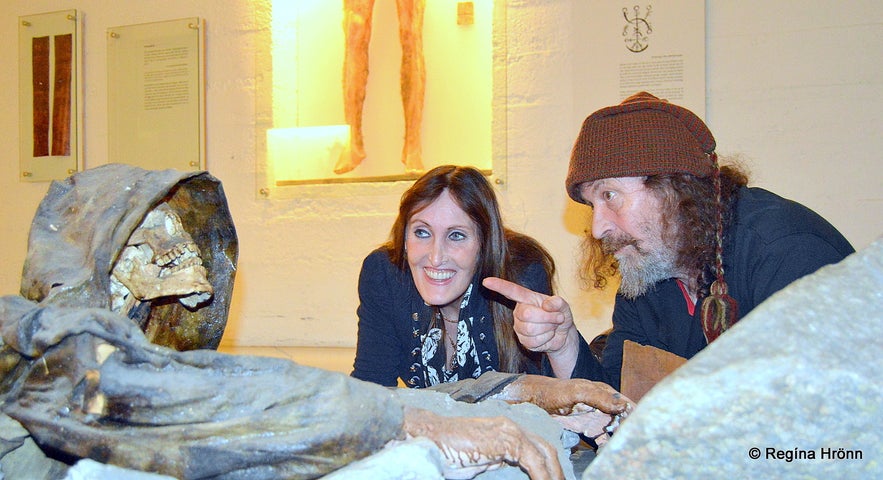
Sigurður and I on the floor by the zombie at the Icelandic Museum of Sorcery and Witchcraft
At the Sorcerer's Cottage, you might even have met Sigurður in full attire acting as the sorcerer himself! On the two occasions that I have visited the Sorcerer's Cottage, it was open but there was nobody around. I would have loved to meet the sorcerer in person!
Sigurður allowed me to use the photo below of the sorcerer, shot by Ágúst G. Atlason, photographer.
If you were not lucky enough to meet the sorcerer during your visit and have your picture taken with him, then you can always have your Viking and Sorcery portrait taken at Mink in Reykjavík :)
Photo courtesy: the Museum of Icelandic Sorcery & Witchcraft - the late Sigurður Atlason
Both these sorcery exhibitions depict the history of sorcery, which was seemingly very powerful in this area of Strandir. In Trékyllisvík at Strandir, 3 men were burnt at the stake for sorcery in 1654 and then the witch craze started for real.
The first man thought to have been burnt at the stake though as a sorcerer was Jón Rögnvaldsson, who was burnt in 1652 in Svarfaðardalur in Eyjafjörður in North-Iceland. Jón Rögnvaldsson was charged with raising a ghost (zombie) to cause harm to his enemy.

Kotbýli kuklarans - the Sorcerer's Cottage
This period of time in Iceland, from 1654-1690, has been called Brennuöldin or the Fire century. Another 16 men and 1 woman were burnt at the stake, the last one in 1683, again in the Westfjords Region
Written history tells of two witchcraft trials related to Bjarnarfjörður and many of the inhabitants in this fjord were connected to the last man to be sentenced to death for sorcery in Iceland in the year 1690, Klemus Bjarnason. He was pardoned by the Danish King and saved from the fire and sentenced to exile instead.
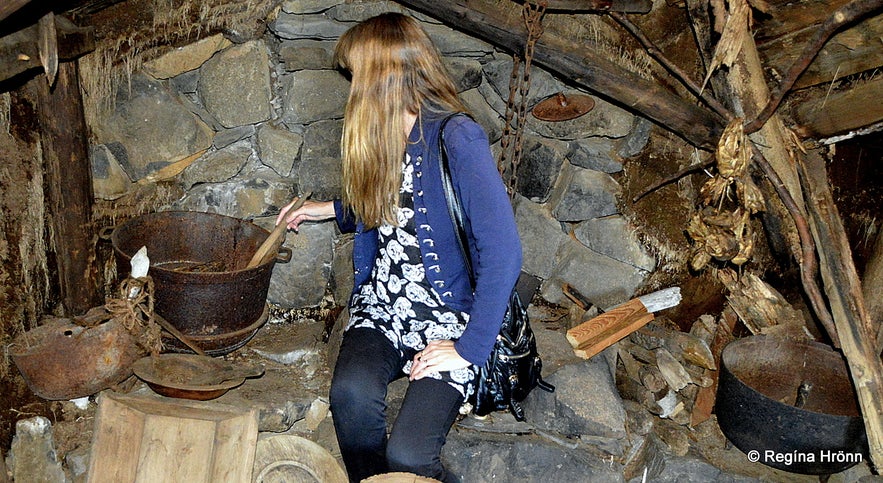
Checking out the kitchen at Kotbýli kuklarans - the Sorcerer's Cottage
Visiting these 2 sorcery exhibitions, the Sorcerer's Cottage at Klúka and the Museum of Icelandic Sorcery and Witchcraft in Hólmavík is a very different experience. The surrounding darkness in the Icelandic habitation of the old makes everything look more mystical and occult. These 2 sorcery exhibitions complement each other perfectly, in my opinion.
Some people get a bit wary inside the Sorcerer's Cottage and some younger guests have left the cottage in panic. There is nothing to be afraid of though, no harm will befall you inside the Sorcerer's Cottage :)
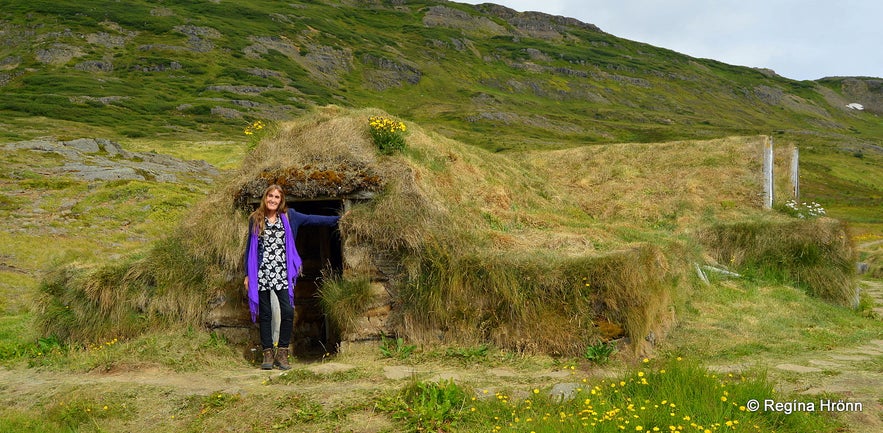
By Kotbýli kuklarans - the Sorcerer's Cottage
You will find the Sorcerer's Cottage at Klúka in Bjarnarfjörður next to Hotel Laugarhóll. This is a really interesting area as here you will also find a swimming pool and natural hot springs, one of which is the preserved hot spring of Guðmundur the good, who was a bishop at Hólar. I tell you about the hot springs in my next travel-blog.
The opening hours for the Sorcerer's Cottage or Kotbýli kuklarans, as it is called in Icelandic, are: in the summertime every day from the 15th of June until the 31st of August from 12 noon until 6 pm.

Kotbýli kuklarans - the Sorcerer's Cottage
How to Get There: Follow ring-road 1 from Reykjavík and turn left onto road 60; turn right on road 61 and right again on 643. From Akureyri, turn right off ring road 1 onto road 68, before turning right onto road 61 and right again on road 643.
Follow the sign: Kotbýli kuklarans.
Here you can see the location of the Sorcerer's Cottage on the map. GPS: 65°46'51.9"N 21°31'08.1"W (to Laugarhóll hotel)
Please note that this location is only accessible in summer, whereas the Sorcery and Witchcraft Museum at Hólmavík is open all year round. To reach Strandir you can rent a car in Reykjavík and drive up to this area in a day.
Have a lovely time in the Strandir area :)
其他有意思的博客
冰岛最浪漫的角落
对于很多人,遥远的冰岛有着世界尽头的神秘,有着区别于巴黎、马尔代夫、自成一体的浪漫。没有埃菲尔铁塔和蒂凡尼,没有热带沙滩,而是在冰川、火山、苔藓地的背景下蜜月旅拍、婚拍,甚至举办一场冰岛婚礼。来冰岛旅行,多是要跨千山万水、飞跃大洋大陆,很有一点“万水千山陪你走过”的史诗感。难怪很多人说,光是冰岛二字,就足够浪漫了。 冰岛虽然不大,但是地貌极其丰富,不同的自然景观自然有不同的气质。这一篇,就挑阅读更多从极光观测到摄影-到底该不该来冰岛看极光
很多朋友都想来冰岛看极光,但是冰岛到底适不适合看极光呢?几月、什么季节能看到极光?是不是一定要参加北极光旅行团?如何能拍摄出美丽的极光照片呢?在冰岛住了好几年了,从刚开始逢极光必出门,到如今家里阳台就能看极光,我对在冰岛看极光的了解和经验,也算得上大半个专家了,且听我娓娓道来吧。 到底该不该来冰岛看极光呢?最坦诚的答案是,不要只为了看极光而看极光。 极光原理 太阳活动→太阅读更多
迷失冰岛的米湖游览推荐|不只有温泉的地热宝藏区
我在冬夏秋均到访过米湖,看过米湖的不同面。一直以来,米湖到底值不值得去是很多游客争论的问题。有些人觉得这里是来冰岛旅行的必去目的地,有些人则说米湖“太丑了”,连照片都不想多拍几张。那米湖到底值不值得来呢?到底怎么玩呢? 米湖的风景 北部的米湖,因地理位置相距首都雷克雅未克略远,很多来冰岛的短途游客选择放弃,其实米湖应该是和黄金圈、南岸沿线至冰湖齐名的冰岛景色,这里冷热相融,可谓最冰岛,尤其阅读更多

将冰岛最大的旅行平台下载到您的手机中,一站式管理您的整个行程
使用手机摄像头扫描此二维码,然后点击显示的链接,将冰岛最大的旅行平台添加到您的手机中。输入您的电话号码或电子邮件地址,以接收包含下载链接的短信或电子邮件。

